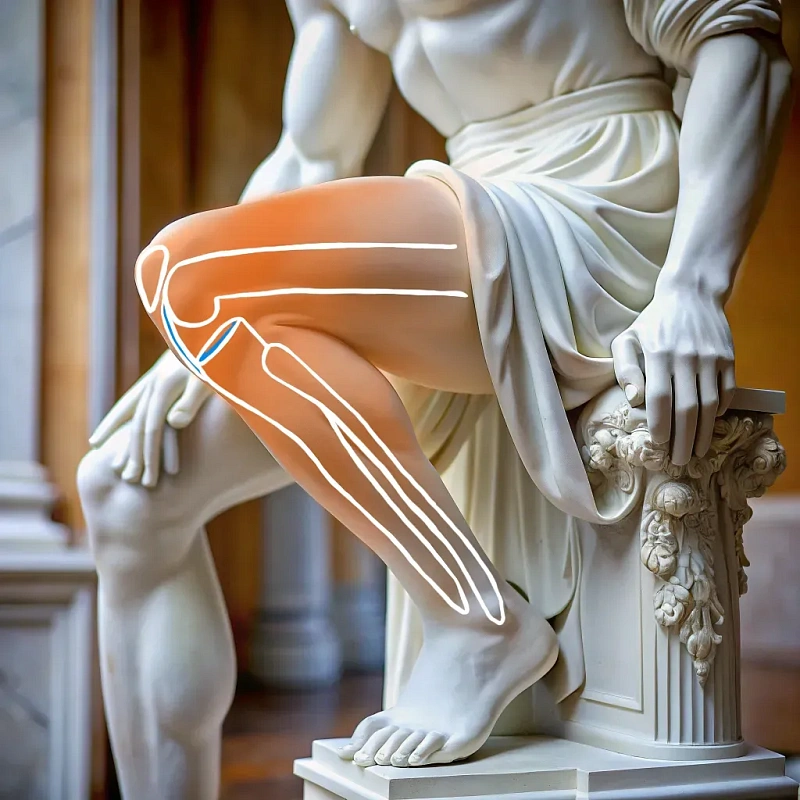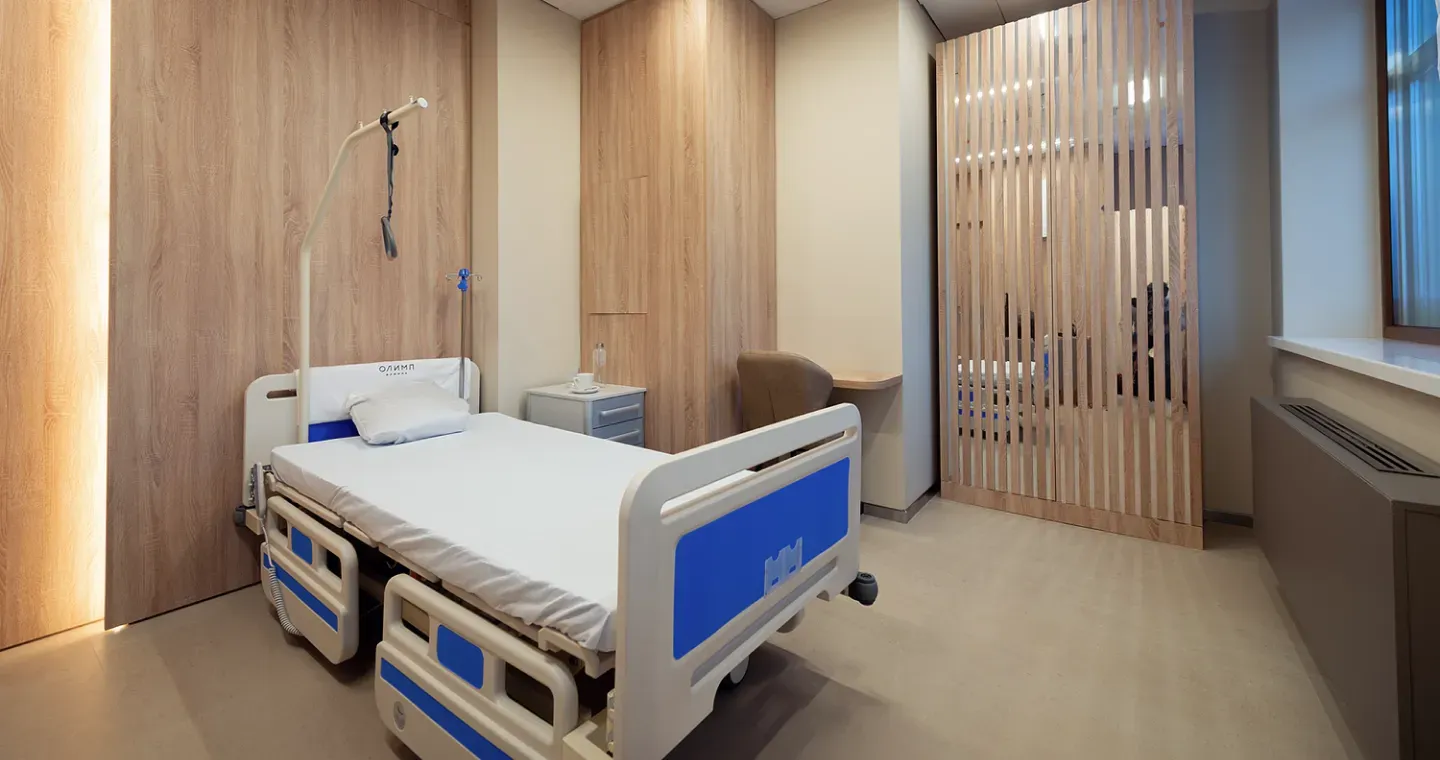Rear-shaped ligament plastic
Small ruptures of the posterior cruciate ligament can be restored by conservative treatment, in a more serious case, an arthroscopic surgery is performed.

Highly qualified Olympus Clinic specialists conduct expert diagnostics and sparing minimally invasive operations on the knee joint of any degree of complexity using modern technologies.
Clinical analysis of blood and urine Radiography of the knee joint Magnetic resonance imaging (MRI) Consultation with a therapist and specialized specialists such as an orthopedic traumatologist and an anesthesiologist
At the initial consultation, the doctor conducts a clinical examination and evaluates the volume of movements. On the day of the operation, the patient is hospitalized in the morning, and laryngeal mask anesthesia is performed. A camera with instruments is inserted into the joint through micro-injections, with the help of which the condition of the internal structures of the joint is assessed. Then, an implant made of the patient's own tendons is installed in place of the damaged ligaments, which is securely fixed. The operation lasts an average of 60-90 minutes.
Arthroscopes with high-quality optics Miniature surgical instruments
After the operation, the patient receives recommendations for rehabilitation. For the first 3 weeks, the knee joint is fixed in a straight orthosis, and the movement is carried out with the help of crutches. Then therapeutic gymnastics and physiotherapy (magnetic therapy, UVT, kinesiotaping, massage) are performed with a gradual increase in the load on the knee. After 4 weeks, a gradual transition from crutches to a cane begins, and then to walking without support. Full recovery to athletic loads takes 6-7 months.
Benefits
The possibility of returning to an active life
For active people, the operation makes it possible to return to sports and physical activity.
Preventing further damage
Plastic surgery helps prevent further damage to the knee joint and reduce the risk of developing arthritis in the future.
Individual approach
The operation is adapted to the needs of the patient.
Frequently Asked Questions
Under what anesthesia is the operation performed?
How long does the operation take?
After what time can you return to normal life?
Didn't find an answer to your question?
You can describe your problem in detail and ask a question to the doctor. He will answer you and help you find a solution
Врачи
Смотреть всех врачейDoctor of Medical Sciences, Associate Professor at the Department of Traumatology and Orthopedics of the RUDN. Head of the Center for Arthroscopy and minimally invasive surgery of the joints of the upper and lower extremities.
Indications and contraindications
Indications
Full breakdown
The ligament is torn into two parts due to a violation of the integrity of absolutely all its fibers
Gearing fibers from the mounting site
damage to the tendon, with which the muscle is attached to the bone
Partial damage with the instability of the knee
tearing the knee ligaments, when only individual fibers are torn
Pain syndrome
painful sensation that causes severe discomfort
Violation of disorder
Dysfunction of the disorder of the limbs
Inefficiency of conservative treatment
The effect can be short -term and unstable.
Expected effect
Restoring knee joint stability
Restoring the stability of the knee joint, which is especially important for active movements and physical activity.
Improving knee functionality
Pain reduction and increased range of motion
Reducing pain and inflammation
Reduction of pain and inflammation in the knee after ligament repair, which contributes to a more comfortable functioning of the joint.
Similar referral activities
Arthroscopy of the ankle joint
Ankle arthroscopy is a minimally invasive surgical procedure used to diagnose and treat various diseases and injuries of the ankle joint.
Arthroscopy of the knee joint
Knee arthroscopy is a minimally invasive surgical procedure for the diagnosis and treatment of injuries and diseases of the knee joint. It allows examining the joint for damage and eliminating the identified defects.
Arthroscopy of the elbow joint
Arthroscopy of the elbow joint is a minimally invasive surgical intervention that allows for accurate diagnosis and simultaneous treatment of joint injuries.
Arthrodesis of the joints of the fingers of the hand
The destruction of the joints of the fingers of the hand is accompanied by pronounced pain and impaired functions. Arthrodesis is a surgical intervention in which the affected joint is completely immobilized, which relieves pain and progression of inflammation.
Arthroscopic revision of the cystic joint
The condition of the wrist joints determines the functioning of the hand. Arthroscopic revision is a minimally invasive diagnostic procedure that assesses the condition of the joint tissues, which is necessary for planning subsequent treatment.
Arthroscopy of the shoulder joint
Arthroscopy of the shoulder joint is a minimally invasive surgical procedure designed to diagnose and treat various diseases and injuries of the shoulder joint.

